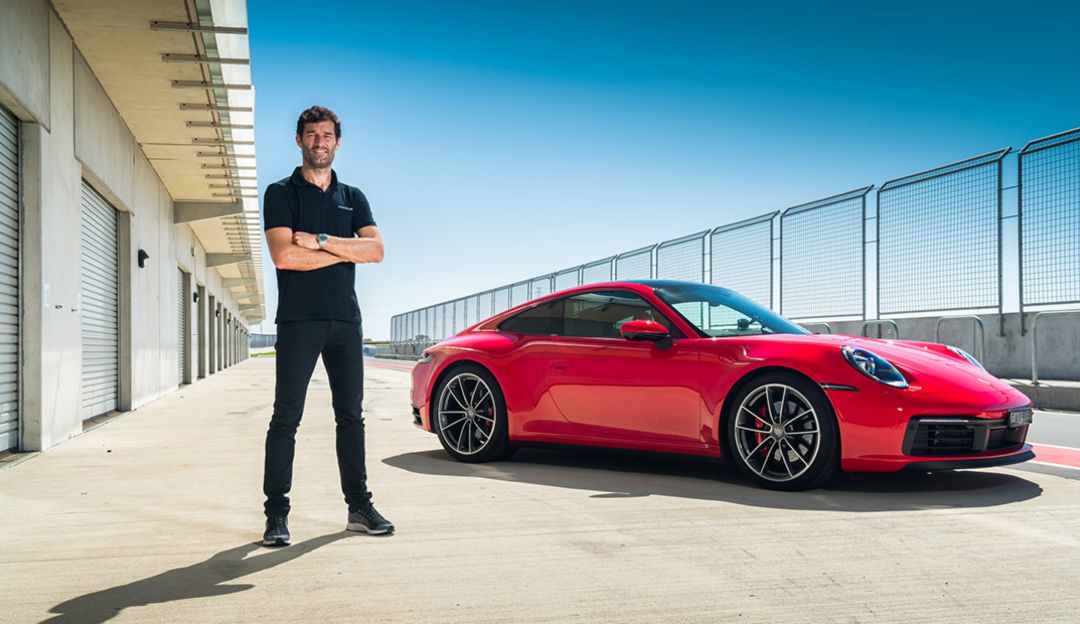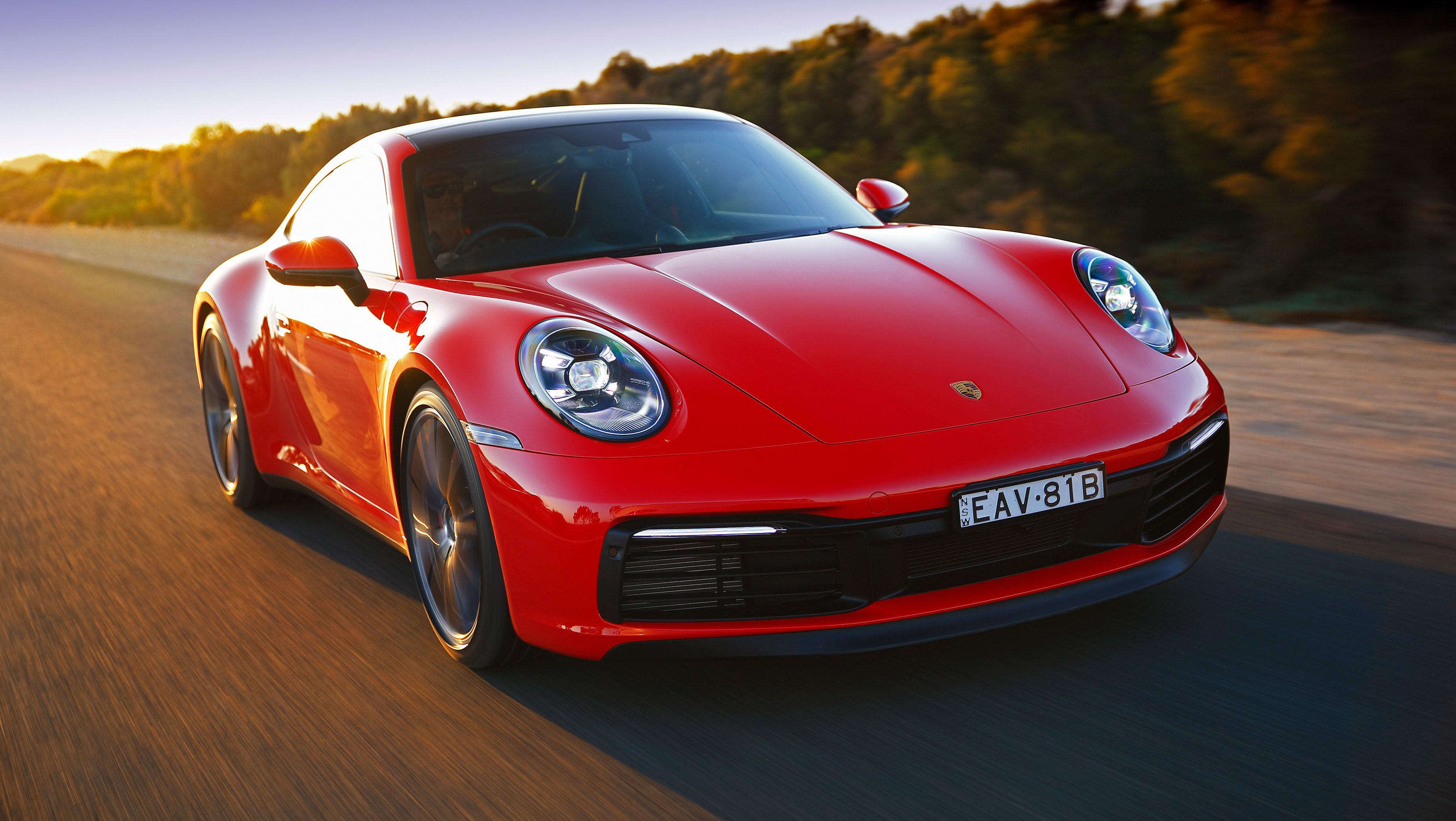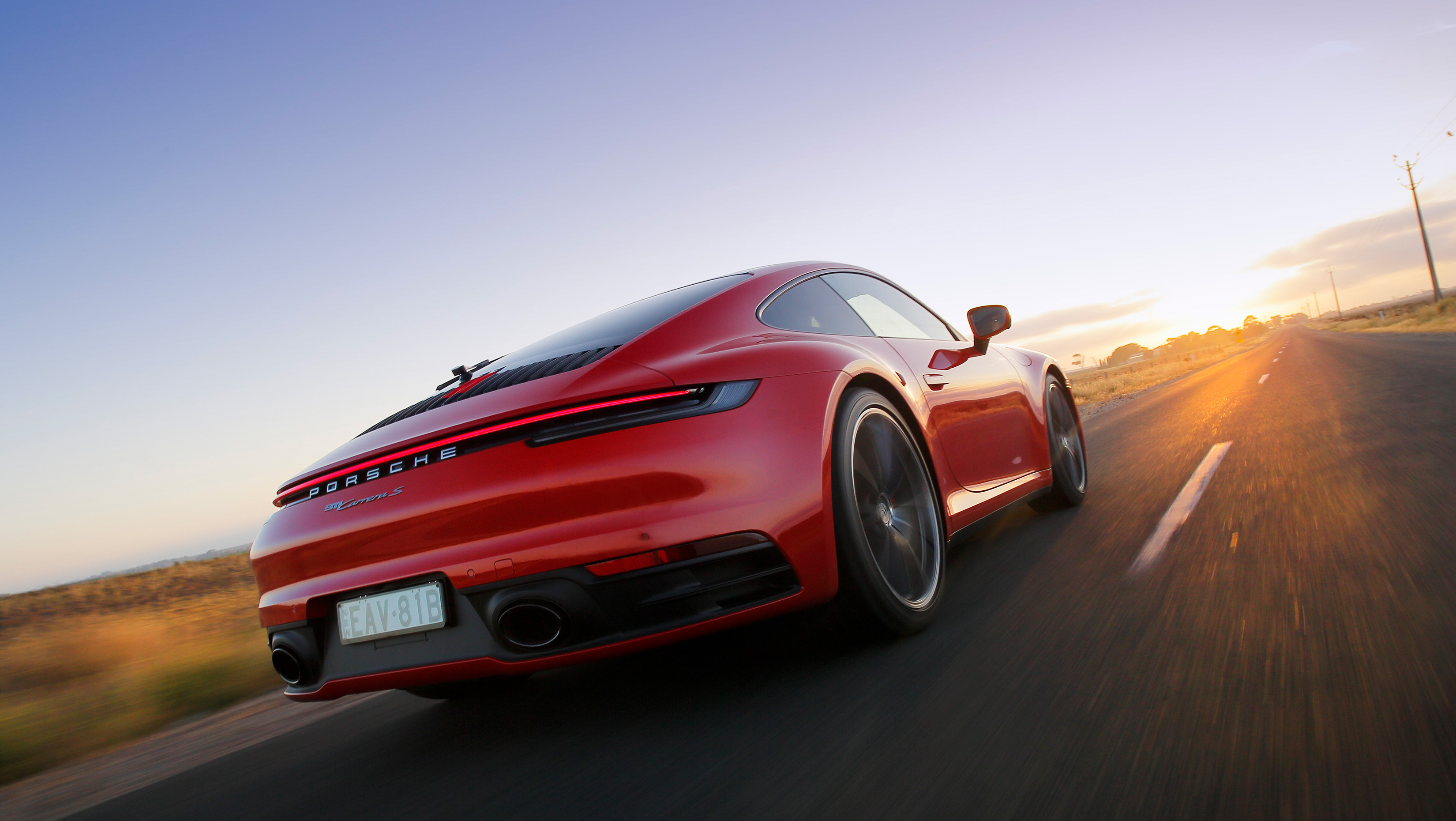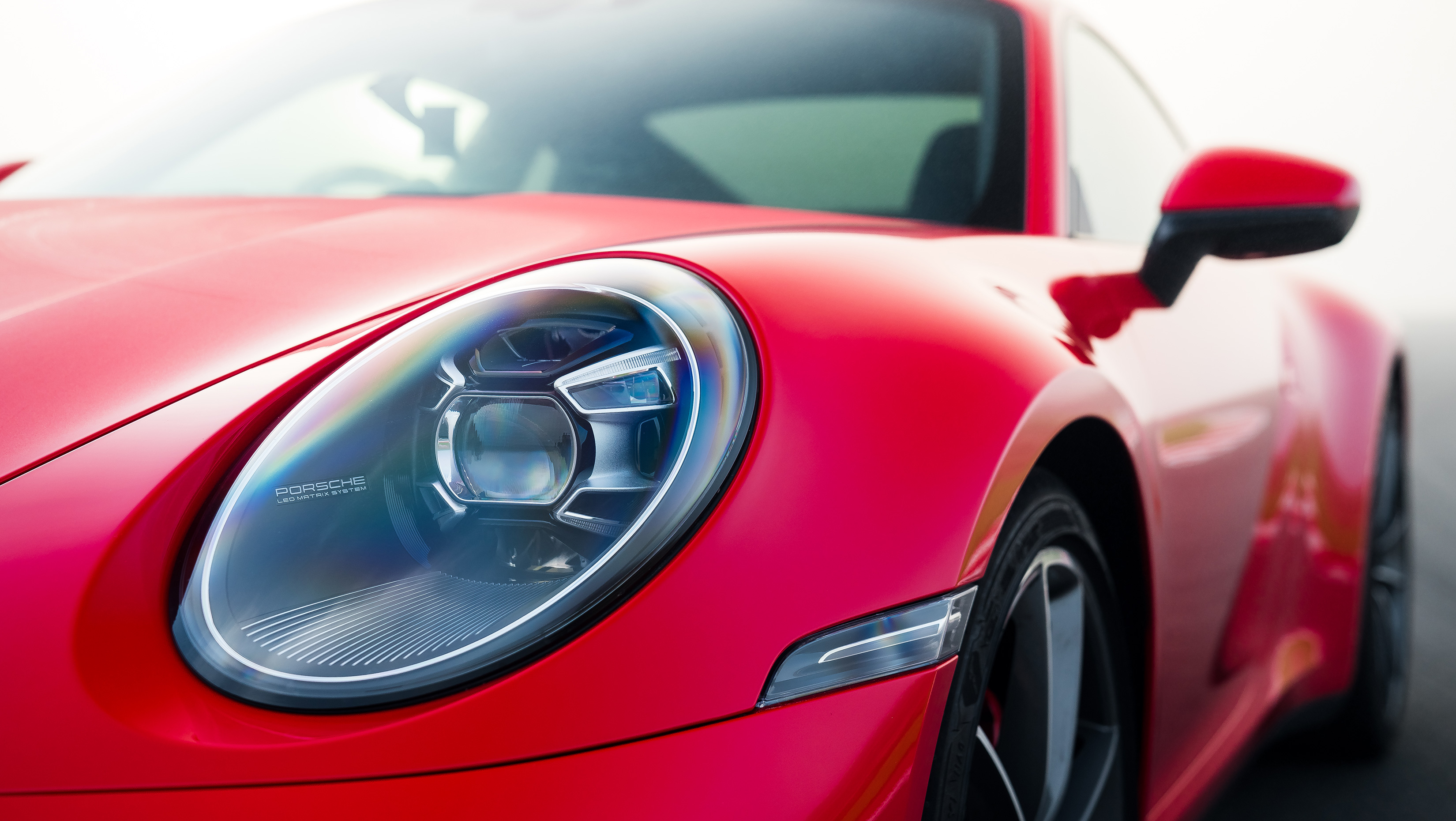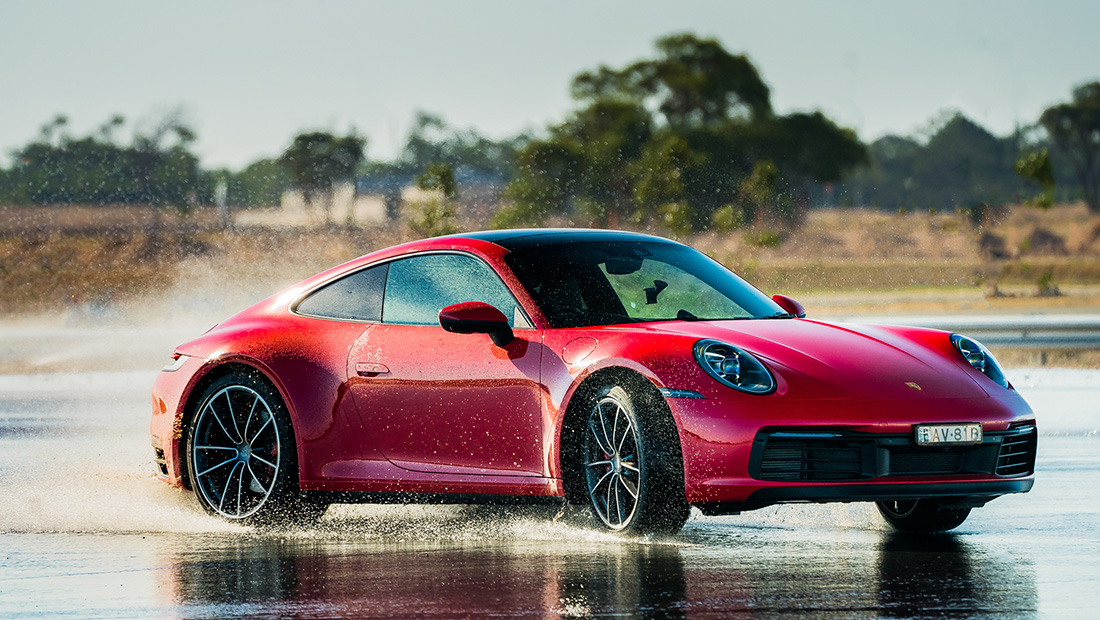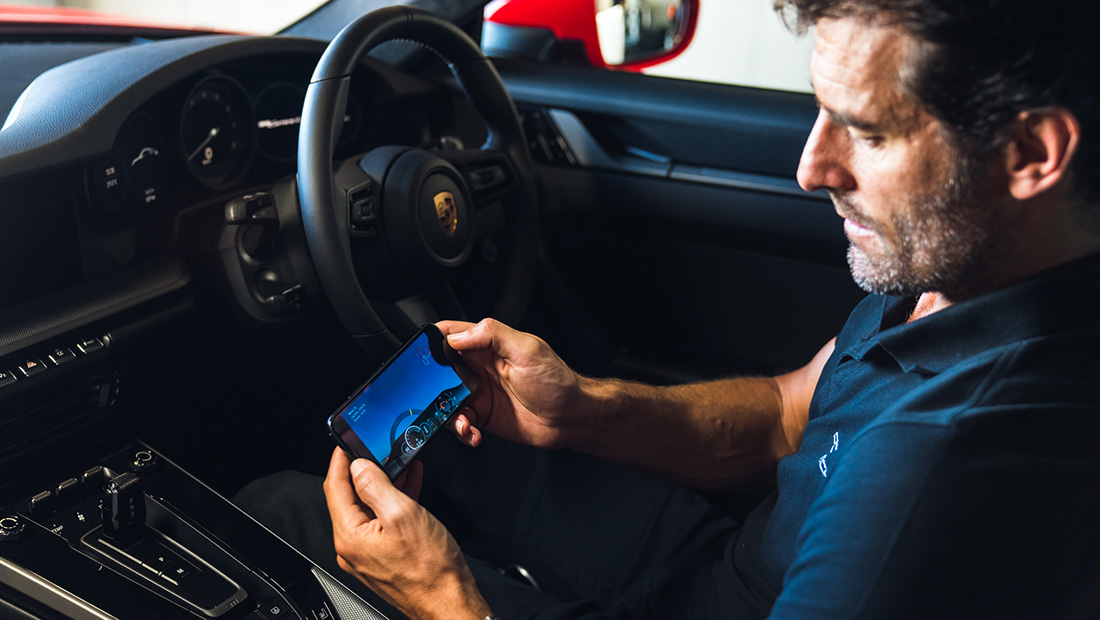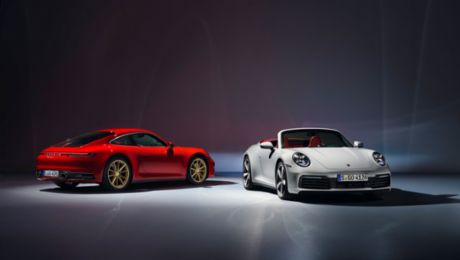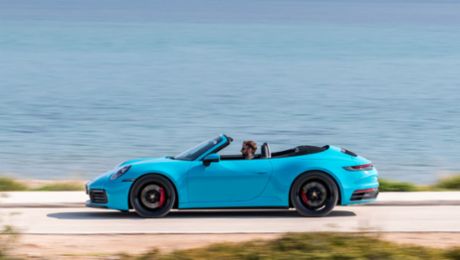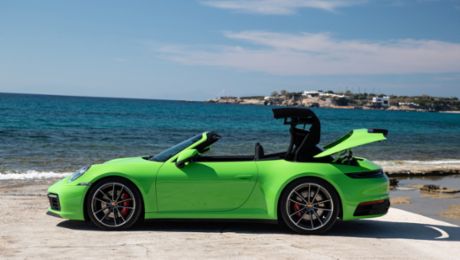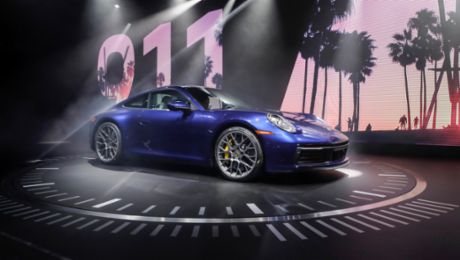At the Australian press launch of the new eighth generation Porsche 911, Porsche ambassador Mark Webber takes to the track at The Bend Motorsport Park near Adelaide, South Australia to discuss his top six features of the iconic timeless machine.
Front Track
Drawing on a sense of familiarity from previous generations the exterior design of the eighth generation 911 is completely new, dynamic, wider and more muscular. The front end of all models are now 45 mm wider with wider wings arching over the 20-inch wheels at the front and 21-inch wheels at the rear.
Mark Webber: “It has the widest front track of any Porsche 911, 45 mm wider in the front track so it’s impressive, helps stability and helps turn in. It’s as wide as the 991 GT3.”
Wide Body
The new 911 body comprises of more aluminium, less steel and new composite materials. The use of innovative lightweight components has reduced the weight of the body shell by approximately seven percent. The body concept results in higher rigidity without compromising stability and safety.
Mark Webber: “Porsche has saved weight on the body of the new 911. They are always looking for stiffness and agility but also trimming a lot of weight out of the previous 991 model.”
Headlights and Night Vision Assist
Integrated into the wings of the 911, sleek and sophisticated LED headlights teamed with Night Vision Assist (optional) increase driver safety. Using a thermal imaging camera, Night Vision Assist detects hundreds of metres in the distance and identifies objects not yet visible with the headlights.
Mark Webber: “This is a massive step forward in terms of driver safety. The headlights are dynamic, I have used them a lot in Germany. You can pretty much leave the high beam on and the 911 tailors the high beam and hotspots to where the lights need to go which is a massive step forward on the safety of driving at night.”
Wet Mode
A world first introduced for the Porsche 911, Porsche Wet Mode can automatically detect significant wet road conditions via acoustic sensors in the front wheel housing and prompts the driver to switch manually to Wet Mode. Once activated Porsche Stability Management (PSM), Porsche Traction Management (PTM), optional Porsche Torque Vectoring (PTV) and adaptive aerodynamics work together to increase driver stability.
Mark Webber: “One of the biggest steps forward with the 911 is the ability to have the Wet Mode. With this 911 it is absolutely leagues apart from anything Porsche has done before and absolutely class leading when it comes to slip control, software and detection in terms of the amount of torque you need. It is incredibly sophisticated and the best safety mode in wet conditions I have ever experienced.”
Porsche Track Precision App
The Porsche Track Precision App allows drivers to improve their driving skills on track with the selection of over 200 predefined racetracks worldwide or an option to create their own. The app, connected to the Porsche Communication Management system, accurately videos and records laps from the vehicle sensors allowing drivers to test their limits, review and analyse lap times, g-force numbers and much more.
Mark Webber: “The Track Precision App gives you a chance to improve your driving on track. It is staggering the amount of detail you can go into with high-grade videos looking at telemetry, all of your braking points, turn in and throttle application. So the way Porsche have put the app together is absolutely world class. It is pretty much better than what I used to have in racing, so I wish I had it back then. I’ve used it, I love it and it’s also a great chance to show other people how to improve their driving.”
Power
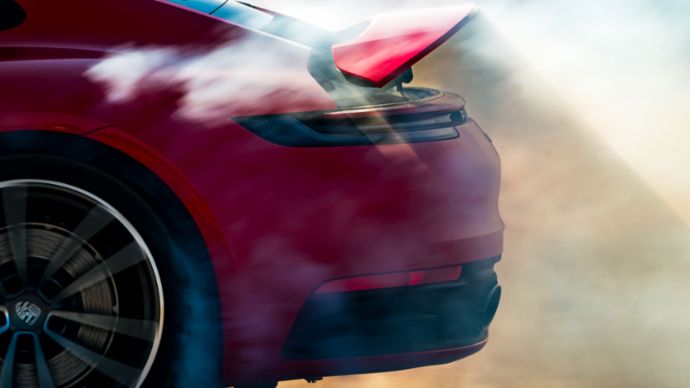
With an increase of 22 kW (30hp) compared to the previous generation of 911, the turbocharged flat-six engine of the eighth generation 911 Carrera S and 911 Carrera 4S now produces 331 kW (450hp; 911 Carrera S: Fuel consumption combined 10,0 – 9,6 l/100 km; CO₂ emissions 227 – 220 g/km; 911 Carrera 4S: Fuel consumption combined 10,1 – 9,7 l/100 km; CO₂ emissions 231 – 222 g/km). Each variant is also 0.4 seconds faster than the previous respective models with the 911 Carrera S accelerating zero to 100km/h in 3.7 seconds and the 911 Carrera 4S in 3.6 seconds, a speed that can be increased by a further 0.2 seconds with the optional Sport Chrono Package.
Mark Webber: “Because … 450hp!”
